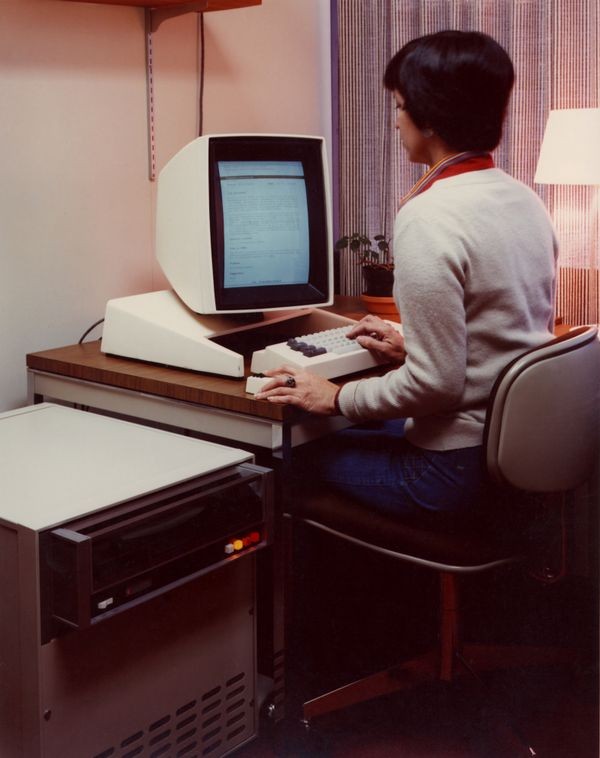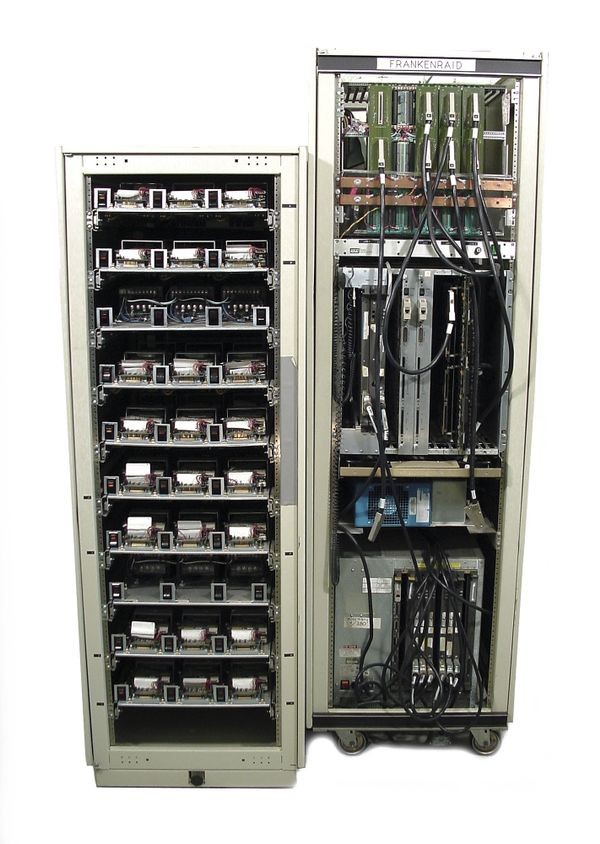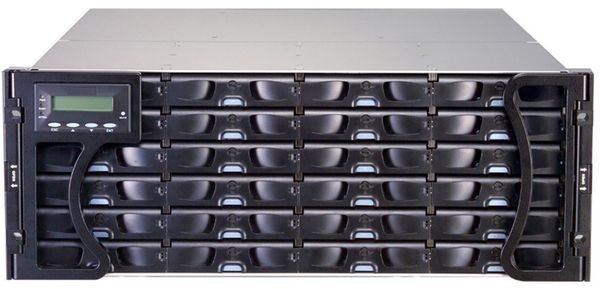Disk Storage systems
Xerox Alto
The Xerox Alto featured local area networking allowing users remote access to each other’s hard disks.
Disk Storage systems
A single disk drive suffices for small personal computers. Larger computers and networks, however, require far more storage space.
Multiple disk storage systems (sometimes called “disk farms”) unite many, many drives. Early storage systems used large, costly disks kept near the computers they served. Later systems often use arrays of smaller drives and can be distant, connected as networked storage.
FrankenRAID Prototype
A team at UC Berkeley coined the term RAID (redundant array of independent disks) in the late 1980s. Students spent more than 10,000 hours to build this demonstration system.
View Artifact DetailHarnessing Distant Disks: Networked Storage
Adding disk drives to computer systems originally meant just that: physically adding drives. To ensure speedy data transfer, drives had to be near the computer.
The development of fast networks, starting in the late 1970s, cut the umbilical cord. Disks could be located far from the computer—or computers—using them. They also could be shared, and data could be duplicated to protect against disasters.
An early example was the Alto computer at Xerox’s Palo Alto Research Center, which could act as a “file server” allowing remote access to its disks.
Modern RAID array
Modern RAID arrays use multiple hard disks to provide increased reliability and improved speed.
View Artifact DetailMore is Better: RAID
RAID, a Redundant Array of Inexpensive (later Independent) Disks, uses multiple disks that are grouped to act as one. Early RAID systems “mirrored” data, replicating it on two different disks. If one failed, RAID could still recover the data.
The first commercial RAID disk controller, in 1983, was DEC’s HSC70. In 1989, EMC introduced mirrored RAID on IBM systems. Later “RAID 5” designs used error-correcting codes, which provided failure protection without having to write the data twice.
Today, nearly all servers and mainframes use some form of RAID.


